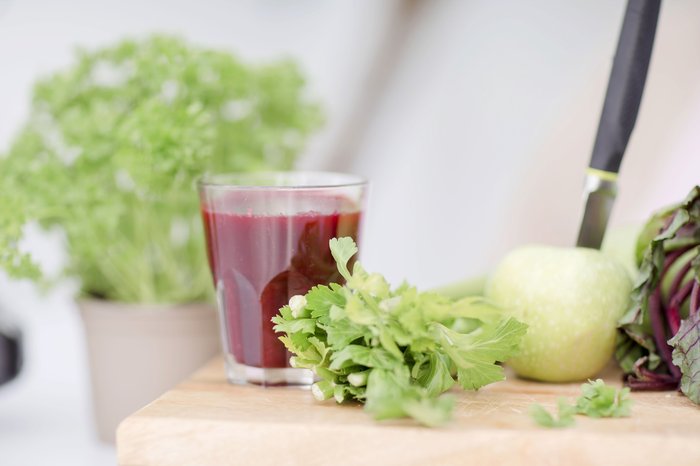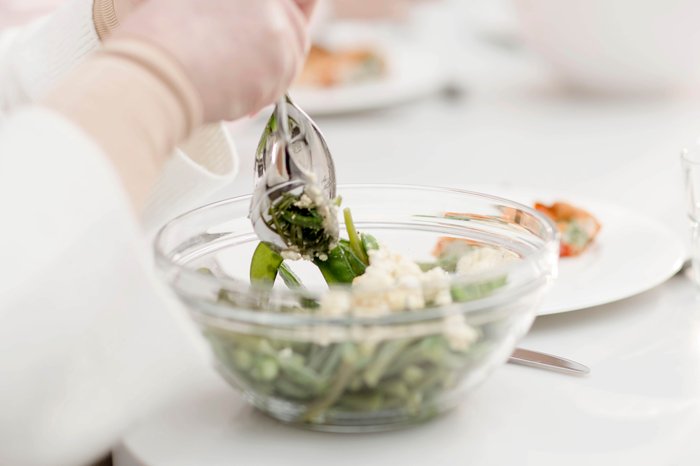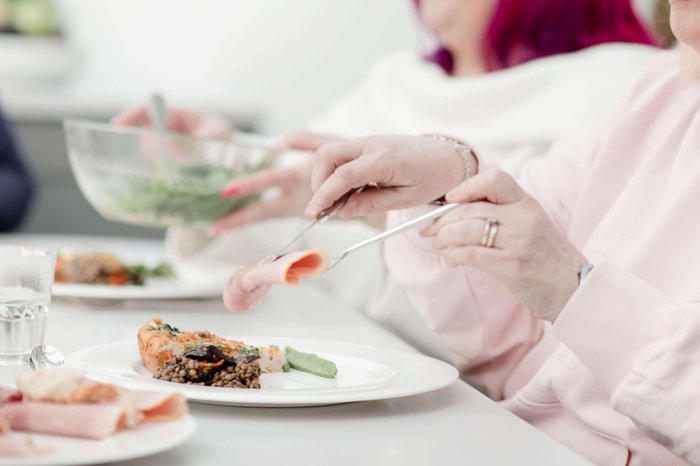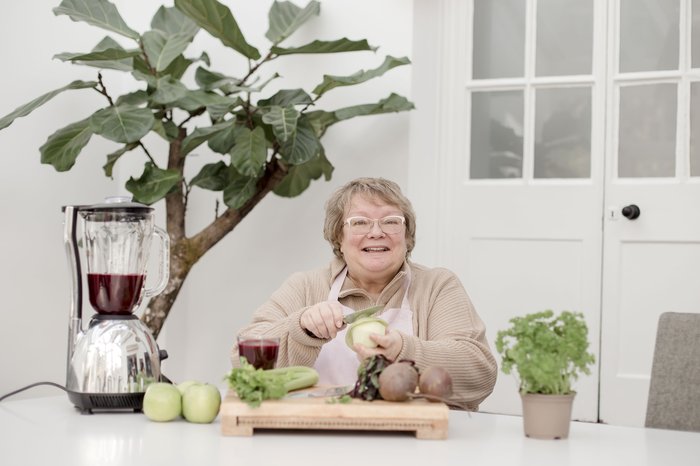Food and lipoedema

Healthy eating
At Talk Lipoedema we are frequently asked for information about what foods are helpful for lipoedema. In this section you will find an overview of general healthy eating advice. We are also working with various professionals with a keen interest in lipoedema, to develop more information about food and lipoedema that will become available here.
A survey of 190 women with lipoedema showed that many had tried different approaches to change their body shape and size, including many different types of diets (Alsop and Smith 2019). The study also showed that some women had experienced disordered eating. At Talk Lipoedema we know that there is good evidence that restrictive dieting (and calorie counting for example) is usually not effective in the long term. This is probably due to how the body adjusts its metabolism, resetting when someone stops ‘dieting’, so weight is quickly regained. Worrying about eating the right or wrong things can also lead to more stress.
Instead we recognise the need to support a healthy eating approach, providing practical and realistic advice on food and lipoedema. Eating a healthy and balanced range of foods is important to our physical and emotional health. Some people with lipoedema have found they can better manage lipoedema symptoms such as inflammation, pain and swelling by changing to eating healthily. Caring for ourselves through making changes in what we eat can be empowering, and can make a real difference. Read below for more information and scroll to the end for useful links. Also check out our blogs to see some inspiring stories from women with lipoedema.

General advice on eating for health
Below is some advice on healthy eating based on information produced by NHS and Governments across the UK.
- Eat at least 5 portions of a variety of fruit and veg each day. Choose from fresh, frozen, tinned, dried or juiced.
- Eat wholegrain versions of starchy food such as breads and pasta.
- Dairy products can be a good source of protein, vitamins, and minerals such as calcium (helps with bone health). Some people with lipoedema have dairy intolerance, so should switch to the the dairy free options that are now widely available.
- Include pulses, such as beans, peas and lentils in meals as good alternatives to meat; they're lower in fat and higher in fibre and protein too.
- For snacking, look for alternatives to highly refined, sugary foods that contain additives; try nuts as a snack. This can help to avoid the artificial 'high' that comes with eating sugary foods.
- Choose lean cuts of meat and eat less processed meat like ham, sausages and bacon.
- Aim to eat at least two portions of fish every week, one of which should be oily fish such as salmon or mackerel.
- Choose unsaturated oils and spreads, and eat in small amounts
- Drink 6-8 cups/glasses of fluid a day, and find alternatives to artificial sweeteners, or fizzy drinks.
Remember that you do not have to cut out certain foods completely. Just aim to eat foods and drinks high in fat, salt or sugar less often, or in smaller amounts.
There is now research evidence that following a 'Mediterranean Diet' approach is helpful in managing other conditions such as high blood pressure, cancer, diabetes, heart disease and arthritis. It also reduces inflammation in the body, and supports weight loss. This approach, that may also be useful for people with lipoedema, includes eating more plant-based foods (such as fruits, vegetables, nuts and seeds), oily fish, and using extra virgin olive oil, while reducing the intake of red meat and dairy products.
Want to know more? You can find other information here:
Read about BANT's healthy eating and well-being approach

Weight gain in lipoedema
Some people with lipoedema experience generalised weight gain. It is possible that this is linked to the genetic influences in lipoedema, but we need more research to understand the processes.
For many complex reasons, there has been a gradual increase in the average weight of the general population across the UK and the wider world. Having lipoedema might mean that you may have been diagnosed as being overweight.
The International Lipoedema Association suggest that being overweight can aggravate lipoedema, making it more difficult to manage and treat, and resulting in reduced mobility which may lead you to a sedentary life style. Read more about what you can do to keep moving here Exercise
Being weighed
NHS clinics often use weight, height and body mass index (BMI) as ways of monitoring weight and the possibility of health risks. This is not always a good indicator as to the health of people with lipoedema.
Another way of identifying the possibility of health risks through measuring would be using the Waist to Hip Ratio Calculator. The waist to hip ratio measurement is calculated by dividing the measurement of your waist by your hip measurement. The waist to hip ratio calculates the possibility of health risks and is an indication of whether you have an apple- or pear-shaped figure.
Research from the Institute of Preventative Medicine in Copenhagen has indicated people who have more weight around their waist could be subject to more health risks than pear-shape figured people, who have more weight around their hips. See Waist circumference and body composition in relation to all-cause mortality in middle-aged men and women
Measuring your hips and waist
In order to get optimum readings for your waist and hip measurements, measure the circumference of your hips at the widest point of your buttocks.
For your hips, measure your waist, which should be just above your tummy button. Waist-to-hip-ratio-calculator

Support with managing your weight and healthy eating
If you have difficulties in managing your weight, ask your doctor or practitioner for more information and support.
If you meet the criteria they may refer you to the healthy weight/weight management services in your local Health Board or Health Trust. This is usually a multi-disciplinary team including nurses, psychologists, dieticians and physical activity therapists. Some of these services are not familiar with lipoedema, so getting an accurate diagnosis is important. They may be interested to read the professional pages here on our website or your can find a copy of this information to download in the resources section below. Be prepared to talk to them about your history, experiences and symptoms of lipoedema. It is worth knowing that anyone who is keen to have weight loss surgery, will be asked to follow a weight management programme before being considered for surgery.
You also may benefit by chatting to other people with lipoedema on our support groups and find out what has worked for them. We will have some case studies coming shortly.


Lisa's Story
Lisa shared her real-life journey on changing her approach to food and nutrition.
More resources-
For help with disordered eating:
https://www.beateatingdisorders.org.uk/
More information on healthy eating:
https://www.foodstandards.gov.scot/consumers/healthy-eating
https://www.nhsinform.scot/healthy-living/food-and-nutrition
https://www.nhs.uk/live-well/eat-well/
Information on Weight loss surgery:
https://www.nhs.uk/conditions/weight-loss-surgery/
Intuitive eating:
https://www.laurathomasphd.co.uk
Health at any size:
